Brutalist buildings in Metro Manila
Many of us often think of Metro Manila as a place filled with modern skyscrapers that look the same. But in some streets around the metro, you can actually marvel at unique-shaped buildings following a style of architecture known as brutalism. Characterized by imposing raw blocks of concrete, these brutalist buildings range from the Philippine International Convention Center (PICC) to Ninoy Aquino International Airport (NAIA) Terminal 1.
So whenever you’re game for an Instawalk, here are 9 brutalist buildings in Metro Manila that will add a futuristic dystopian vibe to your photos.
1. KFC EDSA Greenhills – order your KFC chicken as if you’re in a video game

KFC EDSA Greenhills
Image credit: @brutalistpilipinas/ @patrick_kasingsing
We associate the long stretch of EDSA Greenhills with heavy traffic, but amidst it all stands this eye-catching KFC branch. Unlike the usual look of most KFCs in the metro, the KFC EDSA Greenhills branch is built with heavy blocks of grey and red concrete that project outward.
It’s a unique sight in EDSA, and Redditor Terraky even says it looks straight out of a dystopian cyberpunk video game. We have to agree – if you travel around EDSA Greenhills enough, you’ll be awed by its oddly-shaped structure lurking in one of our most popular roads.
2. Vernida IV Building – distinguished by its steeply sloping exterior
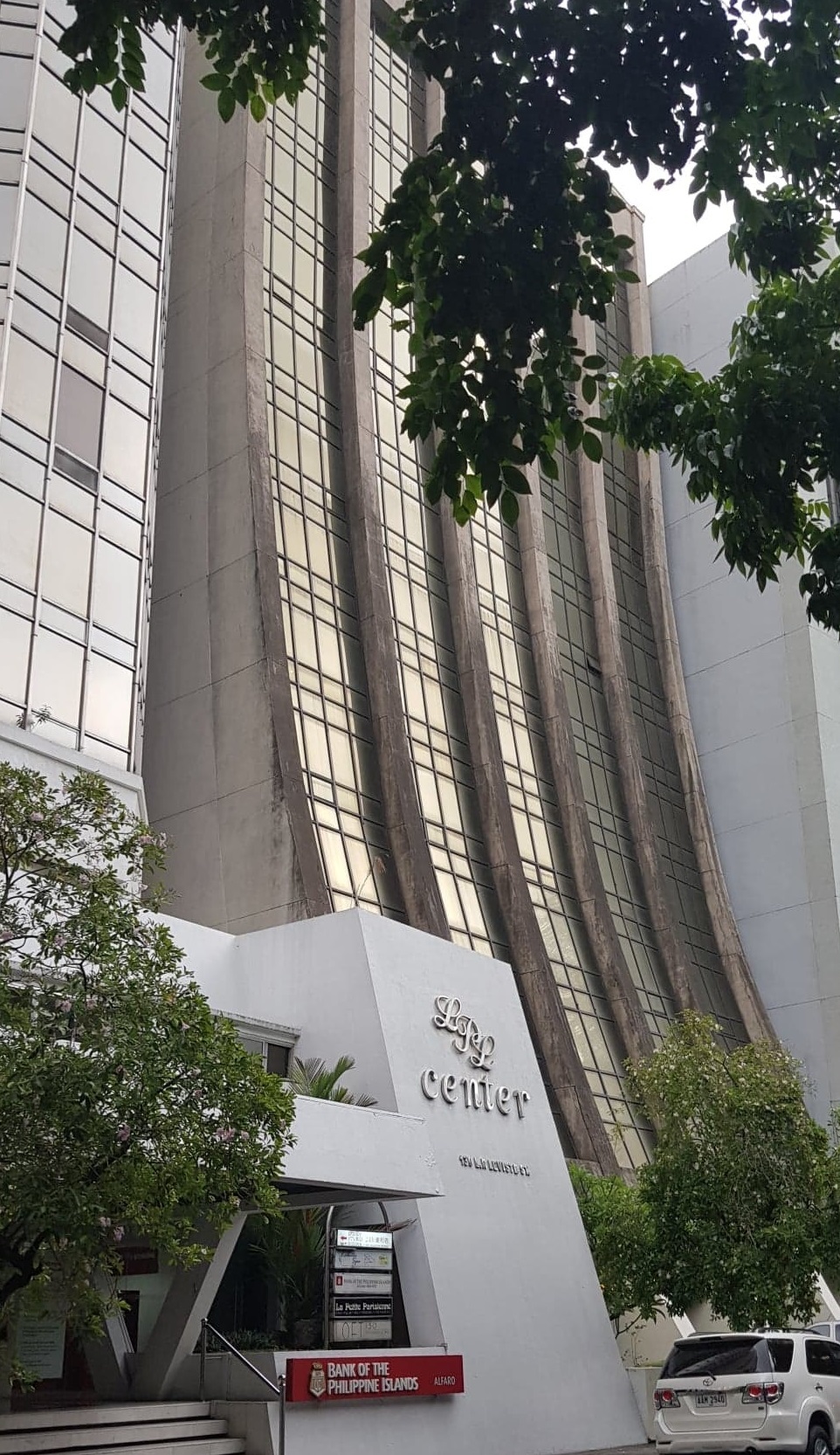
Image credit: Addie Pobre
There aren’t many buildings shaped like the Vernida IV (1979) around Makati, so when you’re walking around L.P. Leviste Street in the city, it’s impossible for you not to turn your head towards this architectural gem.
While it is one of many commercial buildings in the metro housing various offices, it’s also a brutalist creation. Unique for its grey sloping exterior with glass panels, it stands out among the establishments at L.P. Leviste Street.
3. Tanghalang Pambansa of Cultural Center of the Philippines (CCP) – eye-catching icon at Roxas Boulevard

Image credit: Google Arts & Culture
National Artist for Architecture Leandro Locsin’s Tanghalang Pambansa (National Theater), which houses performance art venues and the offices of the Cultural Center of the Philippines (1969), is an architectural icon we often marvel at whenever we’re at Roxas Boulevard.
Boasting a floating architectural style commonly seen in native structures such as the nipa hut, the theater is an imposing building with a rectangular grey block suspended 12 meters high. The entrance is surrounded by a fountain and a lagoon that further emphasize the theater’s levitating effect.
4. San Miguel Corporation – across from SM Megamall
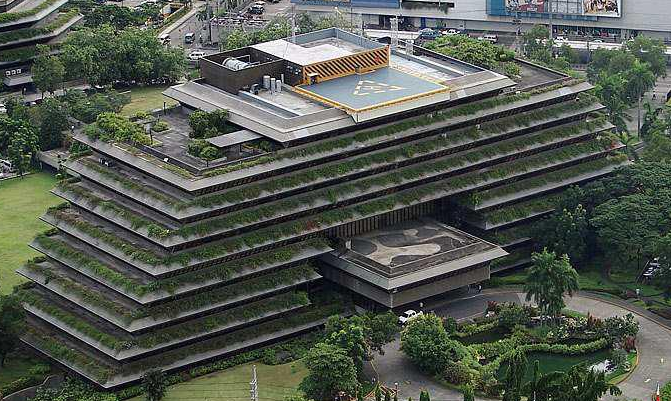
Image credit: Philippine Arts & Architecture
Employees and students who usually wander around the busy shopping malls and offices in Ortigas Center are familiar with the San Miguel Corporation’s headquarters (1984). It’s a unique example of a green brutalist masterpiece, combining eco-friendly elements with brutalist style.
Aside from its emphasis on intertwining plants with a building, it was said to have been inspired by the Banaue Rice Terraces, with the way its layers of concrete are piled on top of each other. The Mañosa brothers and IP Santos, considered the father of Philippine landscape architecture, are the architects behind this unique low-rise, green building.
5. Villamor Hall – framing the “UPLift” sculpture also known as the “female Oblation”
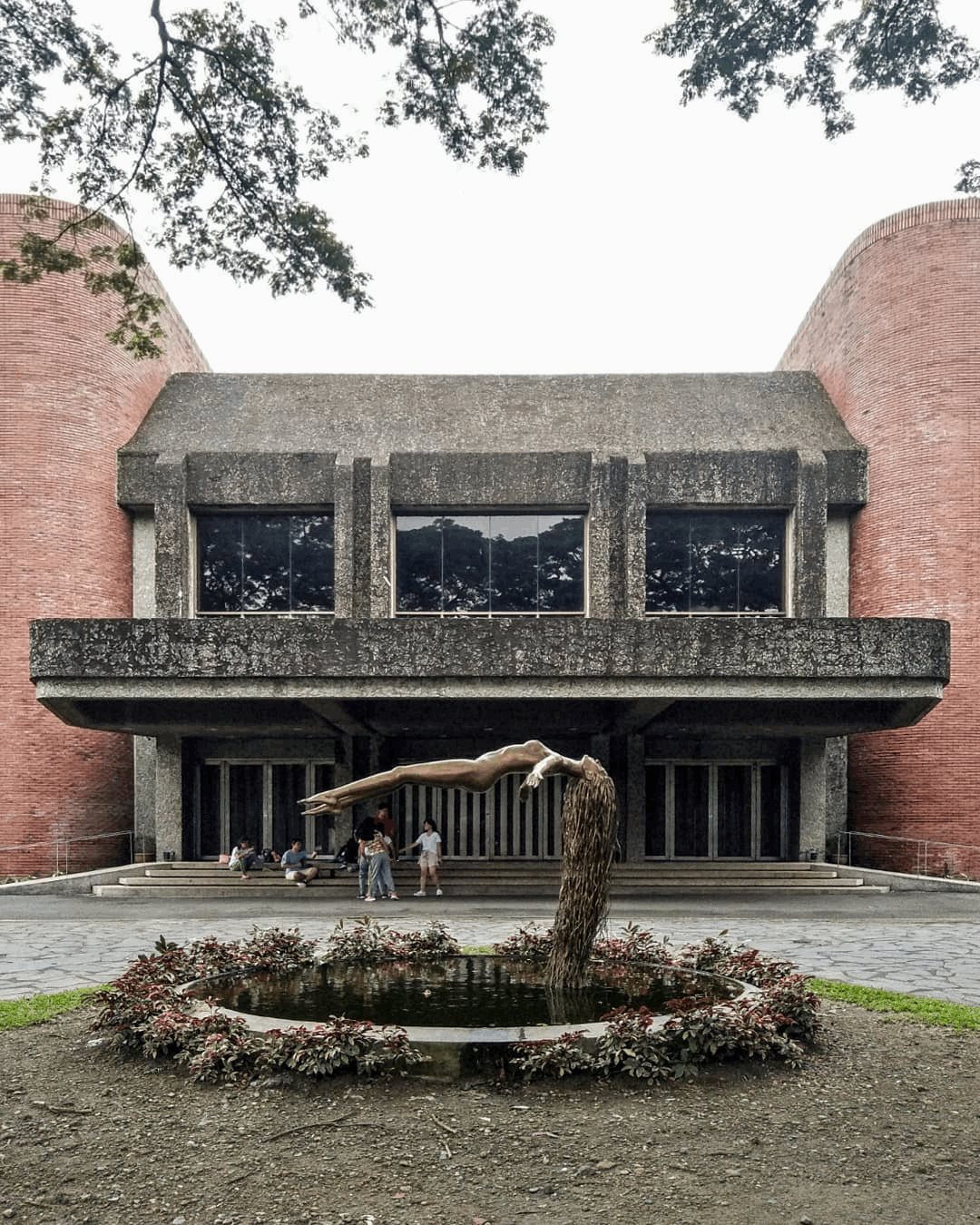
Image credit: @_lawrencecarlos
Many UP students have attended a university performance at UP Diliman’s University Theater or Villamor Hall (1960), distinct for its sturdy features and strong red exterior. Designed by Roberto Novenario, the building hosts various student events.
Further elevating the theather’s aesthetic, a sculpture named “UPLift” was placed in front of the building in 2017, to much public discussion due to plagiarism allegations. Depicting a naked woman levitating above the ground, the sculpture, according to its creator, Ferdinand Cacnio, isn’t a copy and symbolizes being open to learning knowledge and values – what the university also instils in its students.
6. Makati Stock Exchange – imposing structure among Makati’s high-rise buildings
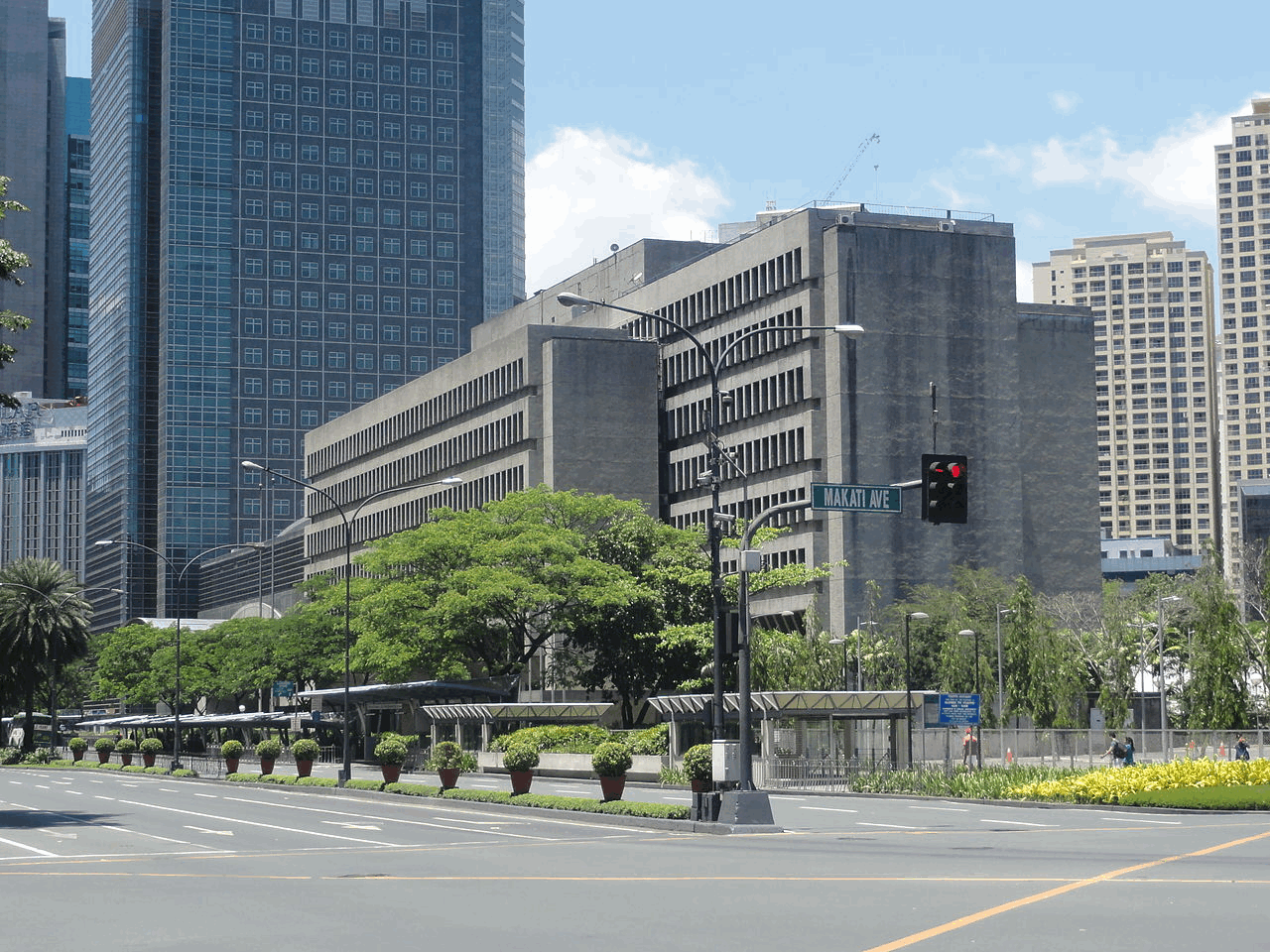
Image credit: Patrick Roque
While wandering along the roads of Makati surrounded by common, high-rise buildings, we can actually bump into buildings that give off a unique, dystopian vibe with their brutalist architecture. One of these is the historic Makati Stock Exchange, another one of Locsin’s masterpieces built in 1967. The building’s various windows, built with symmetrical concrete frames, are the key aesthetic features that give the place an understated but futuristic vibe.
Makati Stock Exchange was one of the first buildings in Ayala Avenue – it began trading as the rival of the Manila Stock Exchange until the two merged as the Philippine Stock Exchange in 1992. These days, the former financial building is now home to various amenities such as executive lounges, function rooms, and office spaces.
7. Government Service Insurance System (GSIS) – features a zigzagging shape

Image credit: @brutalistpilipinas
Buildings are usually rectangular, but not one of Jorge Ramos’s creations, the Government Service Insurance System (GSIS) in Pasay City. A visual feast for the eyes that was completed in 1995, it’s distinguished by its winding shape. The building was built with layers of concrete on top of each other that will make you appreciate its unique zigzagging proportions.
It houses the institution responsible for the insurance plans of employees working for the Philippine government. The Senate of the Philippines also rents a portion of the building.
8. Ninoy Aquino International Airport (NAIA) Terminal 1 – one of the OG terminals at NAIA

Image credit: @patrickroque01
The NAIA Terminal 1 (1981), or the second-oldest terminal at NAIA, has probably impressed many local travelers who fly internationally with its grand facade. That’s because the terminal is another one of Leandro Locsin’s brutalist visions.
Interconnected to three other terminals, Terminal 1 serves all international flights coming into Manila. Two levels – the Arrivals and Departure area – comprise the building, and there are also several services and shops inside.
9. Philippine International Convention Center (PICC) – usual venue of uni graduation or oath-taking ceremonies

Image credit: @marvinortego
Most of us probably remember the Philippine International Convention Center (1976) as the venue of our university graduation or oath-taking ceremonies. Considered as Asia’s first international convention center, Leandro Locsin’s building has hosted several such big events – from summits to conferences to concerts to graduations – held in the Philippines.
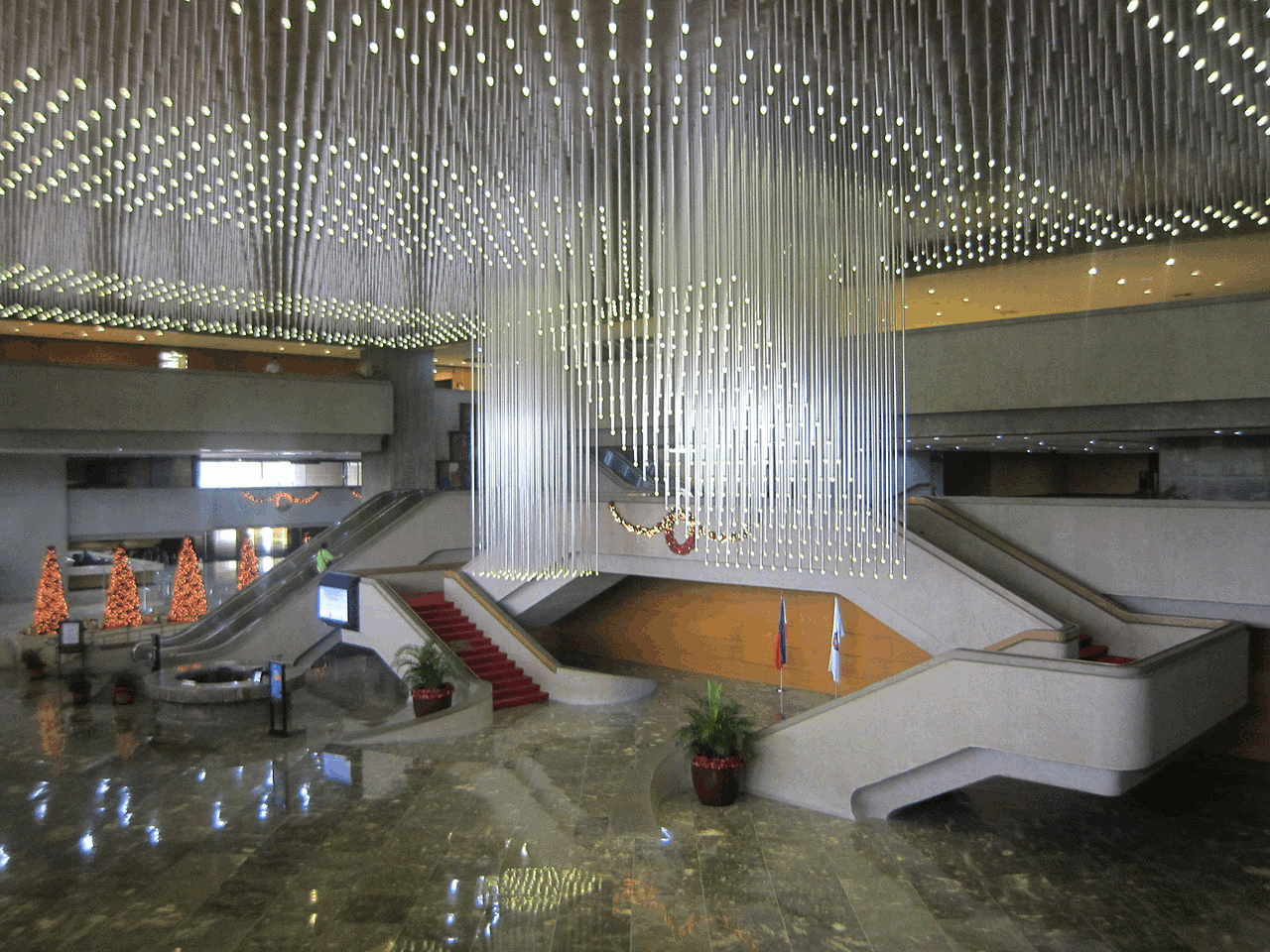
Image credit: Josh Lim/Wikimedia Commons
The iconic brutalist building’s exterior is characterized by rectangular overlapping blocks of concrete balanced with huge glass windows. Inside the convention, the vast halls are accentuated with symmetrical lines and staircases.
Unique brutalist buildings in Metro Manila
From KFC to PICC, brutalist buildings in Metro Manila show a different side of the country’s center through their unique shapes defined by solid, imposing frames.
There’s indeed a lot more to see in the metro:
- 8 extremely old buildings in the Philippines
- 20 historical landmarks then & now
- 10 childhood places in Metro Manila
Cover image adapted from (clockwise from top left): @brutalistpilipinas/ @patrick_kasingsing, Philippine Arts & Architecture, @marvinortego, and Google Arts & Culture

Drop us your email so you won't miss the latest news.






